Philips Streamium MCi500H Review
Philips Streamium MCi500H
Philips' MCi500H tries to bring the Streamium line into Hi-Fi territory but does it suceed?
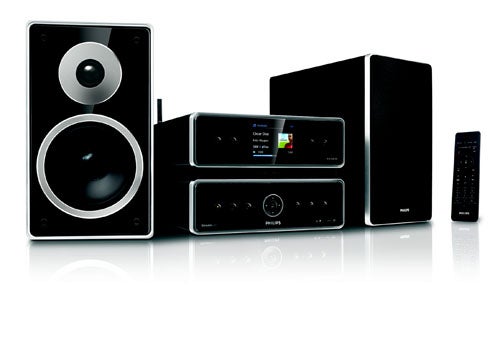
Verdict
Key Specifications
- Review Price: £469.00
Philips’ Streamium system has lead the charge in low cost network music players in the last couple of years. Products like the WACS7500 are incredibly easy to setup, offer a comprehensive list of features, and sound okay as well. However, the WACS7500’s all-in-one design inherently limited how loud it could go and how convincing its sound stage could be.
Enter then, the Philips Streamium MCi500H. This is the big brother to the WACS7500, offering essentially the same feature set but using a traditional micro Hi-Fi system arrangement with separate speakers. 
As with other products in the Streamium range the MCi500H does well on the aesthetics front with the amplifier cum player’s metal body finished in an eggshell black paint that is complemented by a glossy black plastic front and some silver plastic trimming. It’s not going to rival nor indeed sit well with the brushed aluminium sleekness of high-end Hi-Fi equipment but in isolation it looks and feels classy and understated. 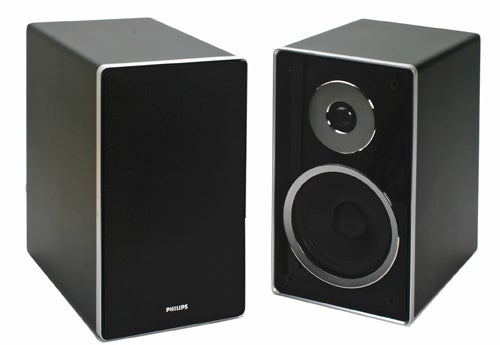
The black and silver theme is continued with the speakers except the primary material of choice is now black laminated chipboard. Cheap as that may sound, they actually look just as good as the main unit, whether you have the fabric coverings on or not. They’re also reassuringly weighty, which is always a good sign in a piece of audio equipment. We also like that the speaker cables are good and long and reasonably thick (the copper inside, not just the casing) and terminated in proper connectors rather than bare wire. That said, we’re less keen on them being hard wired into the back of the speakers as this limits your wiring options and makes it more difficult to replace the cables if they get damaged.
On the surface the MCi500H could easily be mistaken for any other micro Hi-Fi system sporting as it does a CD drive and FM tuner. However, it’s the hard drive hidden inside and the network connections round the back that really tell the story of what this device can do. 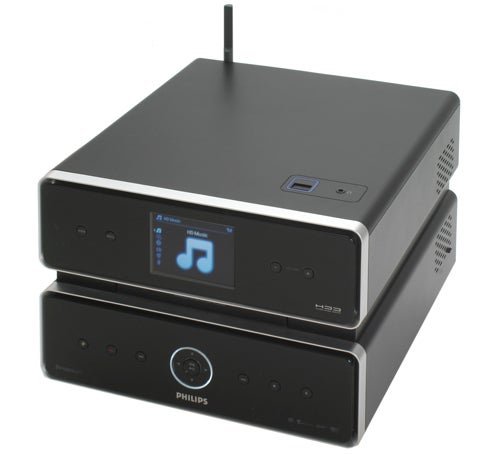
Feed a CD into the drive and you can not only choose to play it normally but also rip it to the hard drive as you play or at higher speed without playing at the same time. Artist, Album, and Track information are looked up from the downloaded Gracenote database and once you’re done you can browse your mp3 collection as you might on any other system.
The MCi500H really comes into its own when you take advantage of its network connections. There’s an Ethernet port round the back and built-in wireless, the aerial for which also pokes out of the back. The wireless supports all the common encryption types so you shouldn’t have too much trouble connecting to your home network, especially as the numeric keypad on the remote makes entering passwords as quick as typing a text on a mobile phone. 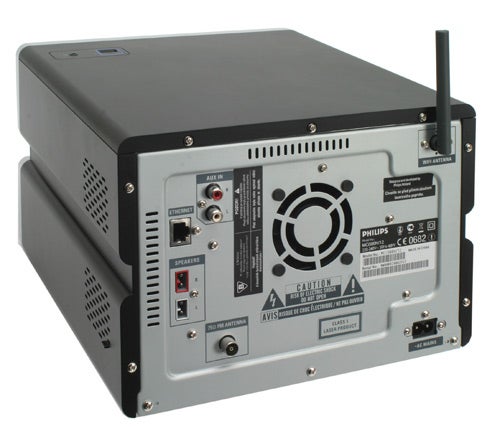
Once connected you can use the MCi500H as a music server for other products in the Streamium line, the theory being you have this larger system in your living room, and have one of the smaller all-in-one units in your bedroom. The setup of this is also incredibly easy and there are neat features like the ‘Music Follows Me’ function that lets you pause the music you were listening to in one room and continue it in another, just by touching one button.
As well as this, you can tune into Internet radio, and connect to UPnP network servers – i.e. music shared from your laptop or PC via Windows Media Player. Moreover, by installing a small bundled application on your PC you can copy your music collection across to the MCi500H, cutting out the need to rip all your music again. Unfortunately, file format support is limited to just mp3, WMA, and AAC, with no DRM support – the obvious omission here being any kind of lossless format. At least album artwork is supported. 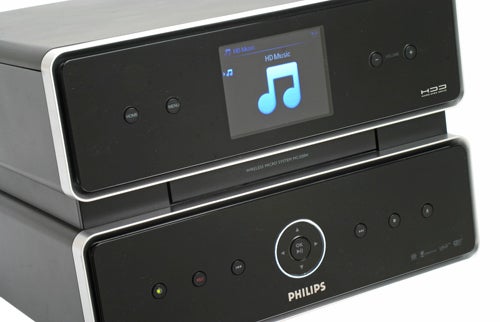
It’s this latter feature that is probably the only reason we can see for Philips choosing a full colour 3in LCD screen as opposed to a simpler, classier, and non-viewing angle affected display technology like OLED or VFD. Not that the screen is bad, indeed it’s rather good with text being sharp, colours vivid, and viewing angles being respectable . There’s just something about all but the best LCD displays (possibly the way they’re so obviously inset and the slight backlight bleed) that rather spoils the sleek look of AV equipment.
Initially, we also found fault in the way you control the MCi500H. For instance, the ‘OK’ button, found in the centre of the D-pad that sits on the main unit and is repeated on the remote, looks like it should be used to select (i.e. open) items as you browse your music collection, much like the way the central button on an iPod’s scroll wheel works. Instead it doubles up as the play button so pressing it while highlighting an artist will start the MCi500H playing all the songs by that artist. 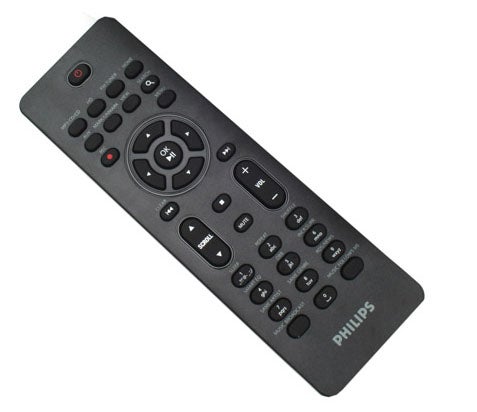
To browse your music you actually use the right and left buttons to delve deeper into a folder tree or work your way back out, respectively. Because of this the left and right buttons don’t double up for skipping forward and back through tracks, either. Instead there are separate buttons for this.
In essence we found a few operations less than intuitive but once we’d got the hang of its idiosyncrasies we found the MCi500H quick and easy to use. 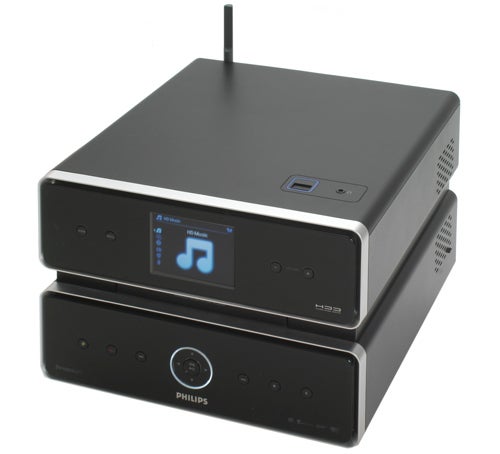
However, what we couldn’t come to terms with, no matter how long we persisted, was the sound quality. Despite the move to a ”proper” Hi-Fi setup, the MCi500H just doesn’t have the fidelity to rival even a basic conventional Hi-Fi. There’s oodles of volume and the sound stage is certainly more expansive and involving than the all-in-one boxes but, while there’s plenty of it, bass sounds boomy and uncontrolled yet lacks any real punch. Likewise the muted top-end limits any real sense of involvement in the music you’re listening to. Put simply, you can spend quite a bit less and get significantly better sound quality from a conventional micro system. 
(centre)”’The MCi500H is designed to be coupled with smaller all-in-one receivers like this WAS7500”’(/centre)
Of course, what Philps has striven for with the MCi500H and the Streamium range in general is to offer a lower cost alternative to high-end network music systems, like the Logitech Squeezebox and Sonos ranges, that packs in plenty of features, is easy to use, and doesn’t compromise on sound quality too much and for the most part it has succeeded. Certainly we can think of no quicker or cheaper entry into the world of networked music. However, if you’re tempted by the MCi500H as a standalone unit to just play your mp3 collection we’d recommend you just buy a decent micro system and an iPod dock instead.
”’Verdict”’
If you plan to use the Philips Streamium MCi500H as the hub to a low cost network music system then it’s definitely worth considering but as a standalone mp3 compatible micro system it doesn’t quite cut it.
Trusted Score
Score in detail
-
Value 6
-
Features 8
-
Usability 9

